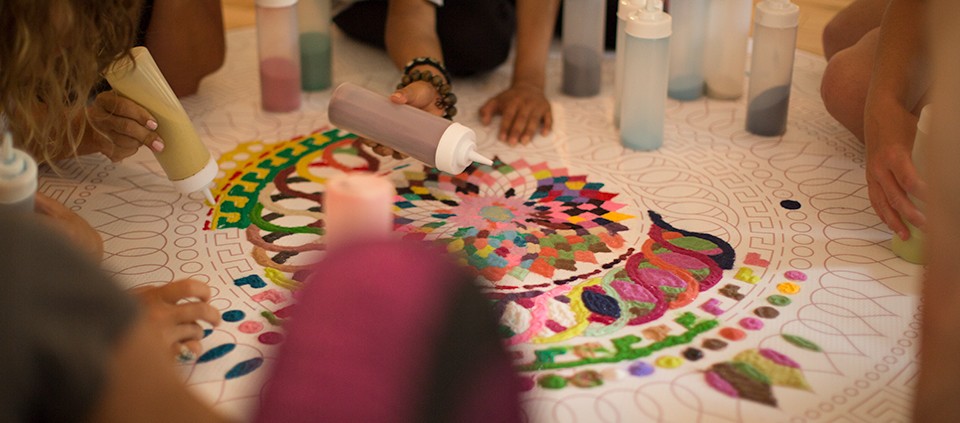Life as a Mandala

by Janet Arnold-Grych
We think of growth as an organic process. Through it, we seek to improve our inner and outer states, especially our interactions with the day-to-day world. Nature seems to validate that growth is a natural, linear process—roots go down, shoots go up, leaves emerge.
But, as adults, the growth we seek in our jobs, our relationships, our behaviors, even our mindsets, can appear to be anything but linear. In fact, it’s more likely to feel like a revolving door. Not this again! Surely life’s difficulties merit us some lift, some evolution to higher ground. Why do we keep tripping over the same signposts—again and again?
Perhaps the question isn’t about our stumbles but about the model we’ve been applying to define growth. What if all our experiences weren’t meant to neatly stair-step to the next level? What if life is really more like a mandala, a circular adventure designed to invite alignment in a larger context and connect us back to center?
Mandala means “circle" in Sanskrit and mandalas have been embraced in many traditions for thousands of years. Whether as a representation of the connection between the cosmos and the self, the inner and outer, or as an almost hypnotic meditation tool, mandalas epitomize integration and wholeness.
Noted psychologist Carl Jung saw the mandala as a symbol of introspection, a guide to the center of the self. When dealing with difficulties in his own life, as well as working with his patients, he found the spontaneous drawing of mandalas to evoke feelings of calm. From these experiences, he extended the circular archetype to the journey itself, describing it as a “circumambulation of the self.“
To think about the journey as purposefully circular is to gain some reprieve from feelings of lackluster advancement. The discussion then becomes about the experience, the view at each turn, rather than the outcome. Aruni Nan Futuronsky, a Kripalu faculty member and life coach, suggests that the path in front of us is the one we are to attend to. “Peeling down the layers, following the breadcrumbs that life offers us,” says Aruni, “the lessons we get lead us to the doorways we need to enter.”
Our experiences then are less about attaining plotted expectations and more about standing where we are in order to better understand the lessons placed before us. “I think the mandala model,” says Aruni, “gives us deeper inroads into the lessons and the internal work that life offers us. Any roadmap is a gift and a blessing.”
Viewing the journey as a mandala may free us to more thoughtfully examine the breadcrumbs that help lead us there—whether all-too-familiar, surprising, small, or even shockingly large. Embracing our experiences as a circular adventure may provide that broader view that better enables us to move not only forward, but inward to the core of our true Self. And that, of course, is the real destination.
Janet Arnold-Grych is a yoga teacher and writer whose work has been published in Elephant Journal, Huffington Post, Third Coast Digest, and other outlets.
© Kripalu Center for Yoga & Health. All rights reserved. To request permission to reprint, please e-mail editor@kripalu.org.